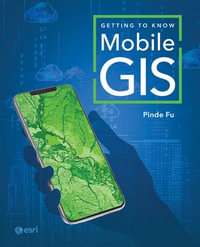Preface.
Abbreviations.
1. Evolving Mobile Networks.
1.1 The Growth of Mobile Communications.
1.2 Roadmap to Broadband Wireless Multimedia.
1.3 UMTS Performance Enhancing Technologies.
1.4 UMTS Network Requirements.
1.5 Conclusions.
References.
2. System Analysis Fundamentals.
2.1 Fundamentals of System Analysis.
2.2 The 3G Communications Environment.
2.3 Concluding Remarks.
References.
3. UMTS Service Components.
3.1 The Service Creation Environment.
3.2 The UMTS Bearer Architecture.
3.3 QoS Attributes in UMTS Bearer Services.
3.4 UMTS Quality of Service Classes and Attributes.
3.5 Mapping QoS Attributes.
3.6 End-to-End QoS.
3.7 QoS within Inter-Working Scenarios.
3.8 Applications and Service Offerings.
3.9 Conclusions.
References.
4. The UTRA Physical Layer Design.
4.1 Summary of Features.
4.2 Dedicated and Common Transport Channels.
4.3 Configuration of FDD Physical Channels.
4.4 Configuration of TDD Physical Channels.
4.5 Spreading and Modulation in TDD.
4.6 Multiplexing and Channel Coding.
References.
Appendix A: DPDCH and DPCCH Fields.
Appendix B: Bit Patterns Compressed Mode and Npilot = 4.
5. The UMTS Development Platform.
5.1 Architecture and Deployment Scenarios.
5.2 The Core Network Domain.
5.3 The UMTS Network Configuration Beyond R99.
5.4 The Access Network Domain.
5.5 UTRAN Identifiers and Functions.
5.6 Mobility Management.
5.7 UTRAN Synchronisation and O&M Requirements.
5.8 UTRAN Interfaces.
5.9 Inter-working of UTRAN Interfaces.
5.10 Radio Interface Protocol Architecture.
References.
Appendix A: UMTS Functional Domains.
6. IP-Multimedia Subsystem (IMS).
6.1 Background.
6.2 Framework for the IP-Multimedia Subsystem.
6.3 IP-Multimedia Subsystem (IMS) Configuration.
6.4 Mobility Management.
6.5 Multimedia Signalling.
6.6 IMS Procedures and Session Flows.
6.7 IMS Transport Issues.
6.8 Deploying IMS Solutions.
6.9 Conclusions.
References.
7. Deploying 3G Networks.
7.1 Background.
7.2 Network Dimensioning Principles.
7.3 Parameters for Multi-service Traffic.
7.4 Establishing Service Models.
7.5 Projecting Capacity Needs.
7.6 Cellular Coverage Planning Issues.
7.7 Dimensioning RNC Interfaces.
7.8 Radio Network Dimensioning Field Study.
7.9 Core Network (CN) Design.
7.10 Transmission Network Assessment.
7.11 Co-Locating and Sharing Sites.
7.12 Co-locating Antenna Systems.
7.13 Conclusions.
References.
8. High Speed Downlink Packet Access.
8.1 Background.
8.2 HSDPA and Radio-Access Network Architecture.
8.3 Structure of the HSDPA Physical Layer.
8.4 Coding in the HS-DSCH Channel.
8.5 Associated Signalling for HSDPA.
8.6 HSDPA Technology Evaluation and EU Features.
8.7 Terminal Receiver Aspects.
8.8 Conclusions.
References.
9. The UTRA Transmission System.
9.1 UMTS Spectrum Allocation.
9.2 Radio Transmission and Reception Aspects.
9.3 Transmitter Characteristics.
9.4 Receiver Characteristics.
9.5 UTRA RF Performance Examples.
9.6 Conclusions .
References.
10. 3G Services Enablers.
10.1 Introduction.
10.2 Content Distribution Platforms.
10.3 Facilitating Real Time IP Services.
10.4 Enabling Location Communication Services (LCS).
10.5 VHE/OSA.
10.6 Conclusions.
References.
11. Resource and Network Management.
11.1 Introduction.
11.2 Radio Resource Management and Signalling.
11.3 Network Management.
11.4 UMTS Network Optimisation.
References.
12. Complementary UMTS Technologies.
12.1 WLANs and 3G Networks.
12.2 WLAN Deployment Scenarios.
12.3 Train WLANs and Other Deployment Scenarios.
12.4 Description of MO-WLAN Building Blocks.
12.5 Security and Authentication.
12.6 Enhanced Data Rate for GSM Evolution (EDGE).
12.7 All IP Radio-Access Network Characteristics.
12.8 WiMAX ??? Enhancing Broadband Hotspots.
12.9 Conclusions.
References.
Index.
























